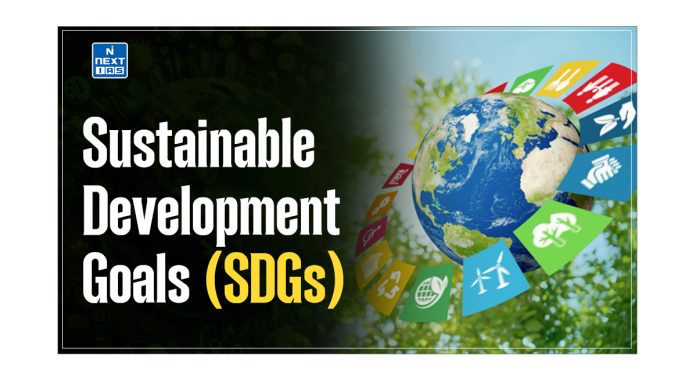India’s food processing sector is one of the largest in the world and is expected to reach a value of $535 billion by 2025-26. This sector plays a crucial role in connecting Indian farmers with consumers both within the country and internationally.
The Ministry of Food Processing Industries (MOFPI) is actively encouraging investment across the entire food processing value chain.
The food processing industry in India encompasses various sectors such as grains, sugar, edible oils, beverages, and dairy products.
Key Sub-Segments
The key sub-segments within the food processing industry in India include fruits and vegetables, poultry and meat processing, fisheries, food retail, and the dairy industry.
Ministry of Food Processing Industries:
The Ministry of Food Processing Industries (MoFPI) is responsible for formulating schemes and regulations related to the food processing sector in India. It aims to promote the growth of the Indian food processing industry and increase its contribution to the global food trade.
Important Facts
- Horticulture production in India is estimated to be 342.33 million tonnes in 2021-22, showing an increase of 7.73 million tonnes (2.3%) compared to the previous year.
- India ranks first in milk production, with a total production of 221.06 million tonnes in 2021-22, representing an annual growth rate of 5.29%.
- Egg production in the country reached 129.60 billion in 2021-22, reflecting a 6.19% increase compared to the previous year.
- The total fish production in 2021-22 is 16.24 million tonnes, with 4.12 million tonnes coming from marine sources and 12.12 million tonnes from aquaculture.
- Online grocery retail in India has experienced significant growth, with a compound annual growth rate of over 50%. It is projected to reach $10-12 billion by 2025.
- Seafood exports from India reached an all-time high of $7,759.58 million in FY 2021-22, with three countries accounting for 63% of the exports.
- The total meat production in India for 2021-22 is 9.29 million tonnes, with Maharashtra, Uttar Pradesh, West Bengal, Andhra Pradesh, and Telangana being the top-producing states.
- Rice production is estimated at 130.29 million tonnes, wheat at 106.84 million tonnes, and Nutri/coarse cereals at 50.90 million tonnes for 2021-22.
- India became the second-largest sugar exporter in the world in the Sugar Season 2021-22, exporting 110 lakh metric tonnes of sugar and earning approximately INR 40,000 crore in foreign exchange.
- Non-Basmati Rice has emerged as India’s top agricultural and processed food export item, with exports reaching $4,663 million in the first nine months of 2022-23
Opportunities and Challenge
| Opportunities: – Enhance farmer’s income by better utilization and value addition of agricultural produce – Minimize wastage at all stages in the food processing chain by the development of infrastructure for storage, transportation, and processing of agro-food produce; – Introduce modern technology into the food processing industries from both domestic and external sources; – Encourage R&D in food processing for product and process development and improved packaging; – Provide policy support, and support for the creation of Infrastructure, capacity expansion/ Upgradation and other supportive measures for the growth of these sectors; – Promote the export of processed food products. |
| Challenges: – Inadequate Cold Chain Infrastructure: which results in around 30% loss of farm-gate produce. – Presence of Regulatory Gaps: which exist in food safety and packaging, causing contradictions and delays. – Food Quality Concerns: because of usage of chemicals beyond permissible limits. – Lack of Food Fortification: Processed foods may lack nutritional balance unless fortified, which can affect consumer perception. – Controlling Quality and Safety: is difficult due to the numerous players in the unorganized segment. – Limited Consumer Awareness: about nutrition, food safety, and quality issues. – Other Issues: small and fragmented landholdings, low farm productivity, high seasonality, etc. |
Government Initiatives to Support the Food Processing Industry
- These include the establishment of 41 Mega Food Parks, 376 Cold Chain projects, 79 Agro-Processing Clusters, and the approval of 489 proposals for the creation and expansion of food processing and preservation capacities.
- Two flagship programs, the Production Linked Incentive (PLI) Scheme and the PM Formalization of Micro Food Processing Enterprises Scheme (PMFME), aim to modernize and support the growth of the industry.
- Some other initiatives are Operation Greens scheme, and One District One Product (ODOP).
Conclusion
A robust and dynamic food processing sector in India plays a crucial role in reducing wastage and increasing the income of the farmers and catering to greater demand for processed foods in India.
Previous Year Questions
Q: Elaborate on the policy taken by the government of India to meet the challenges of the food processing sector. ( 2019)
Q: What are the impediments in marketing and supply chain management in industry in India? Can e-commerce help in overcoming these bottlenecks? (2015)
Q: What are the reasons for poor acceptance of cost-effective small processing units? How the food processing unit will be helpful to uplift the socio-economic status of poor farmers? (2017)
GS - 3



